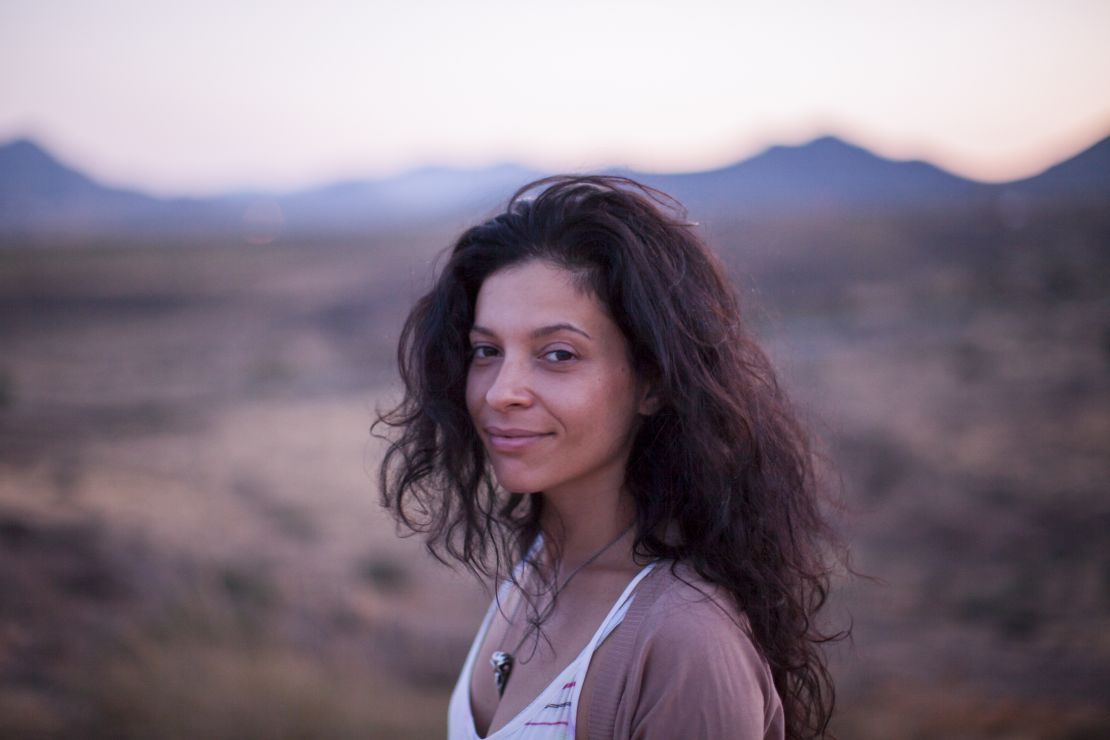To outsiders, the sight of a troupe of dancing bears, decked out in blood-red tassels, stomping through the snowy streets of a small Romanian town might be a strange, almost sinister sight.
But for those who live in Romania’s eastern Moldova region, the arrival of the bears – actually locals wearing real bearskins – is a time of celebration.
The event takes place annually between Christmas and New Year’s.
It’s a tradition that, until recently, few beyond the tight-knit rural communities of the Trotus Valley have witnessed.
But a series of images by New York-based photographer Diana Zeyneb Alhindawi has captured this mysterious ceremony and brought it to a wider audience.
Alhindawi, a former humanitarian aid worker now pursuing photo projects mainly across Africa, is half-Romanian and lived there until she was 8, when her family left as refugees, first to Canada and then New York.

“The bear dances were always one of my favorite memories,” she tells CNN. “It’s a joyous event, although the dancers don’t look that way in the pictures – they’re trying to look fierce.”
Bear tamer
Alhindawi’s beautiful images show men and women in full bear costume, parading through the streets in and around her old hometown, Moinesti.
They’re accompanied by drummers and a singing “bear tamer.”
Candid shots also show the bear dancers enjoying downtime – smoking cigarettes, sharing drinks, relaxing and even kissing.
The bear dancing is meant to drive away evil spirits.
According to Alhindawi, it owes its origins to the time when local Gypsies, also known as Roma, would descend into towns from the forests in which they lived, bringing with them real bears.
Townsfolk would pay the Gypsies in exchange for letting the bear cubs walk up and down their backs – seen as a cure for backache.
Older bears would be made to “dance” by being placed on hot metal plates that would make them hop up and down.
Alhindawi says this took place as recently as the 1930s.
Her grandmother, now in her 80s, recalls seeing Roma leading bears on leashes down from the forest when she was five or six years old.
“The tradition is very undefined because Roma don’t write their history down,” says Alhindawi. “I’ve done research but no one can figure out how they went from live bears walking on people’s backs to people dressed as bears.”
The costumes involved in the dance are actual bearskins.
Economic hard times
While bear dancing was once an exclusively Roma activity, Alhindawi says they’ve been priced out because a ban on bear hunting has escalated the price of the skins up to €2,000 ($2,200).
Most Roma, she says, have sold theirs and can’t afford new ones.
Hard economic times following the collapse of communism meant an end to the days when crowds of bear troupes were welcomed in every house with food, drink and money.
Now fewer groups make prearranged stops at the homes of community figures or restaurants, where they can pick up tips of up to $100.
Recently, some have been able to make more money traveling to bigger cities like Bucharest to perform for wealthy clients.
Even though the tradition is still cherished by locals, Alhindawi says it’s in danger of dying out as local cultures are diluted by Western influences and many people leave home.
Welcome contrast
“Romania has a problem with out-migration because there are no jobs for people of working age,” says Alhindawi. “They’re all away in Italy or Spain or other places.
“In rural areas it’s mostly older people and very young kids, everyone else is gone.”
She says she hopes her photos will help pique international interest in the tradition and perhaps bring visitors to an area that sees few tourists despite spectacular scenery.
For Alhindawi – still coming to grips with working as a photographer in troubled regions, despite considerable acclaim for her work so far – shooting the bear troupes brought a welcome contrast.
“As a new photographer, I’d like to be able to concentrate more on taking a good photo, but in east Africa, I have to watch my back a lot,” she adds.
“It was so great to go to Romania and focus 100% on the photos instead of worrying about the guy with the big gun that might sneak up on me.”
Diana Zeyneb Alhindawi is a photographer based in Brooklyn. You can follow her on Facebook, Twitter and Instagram.














